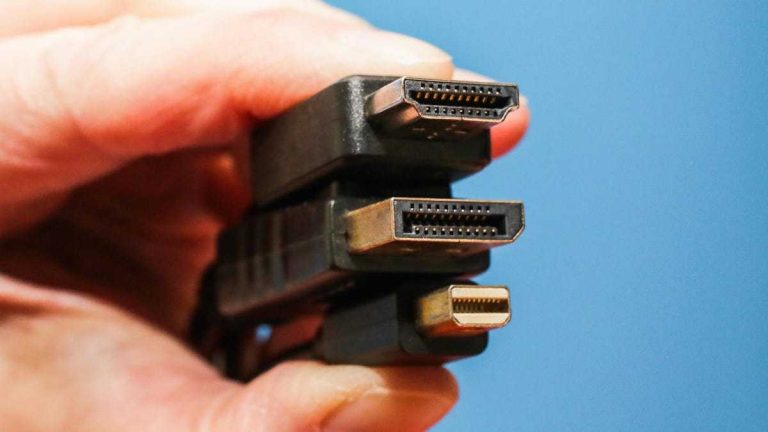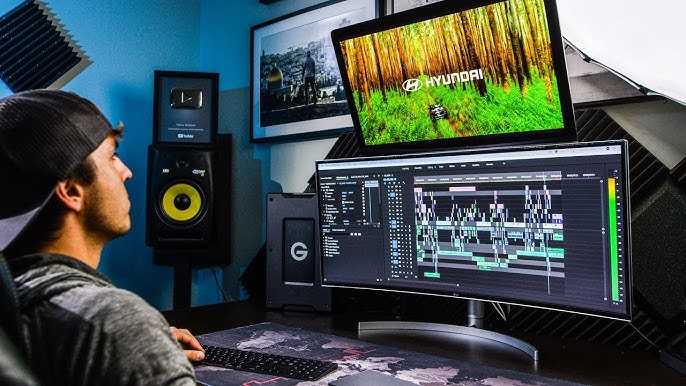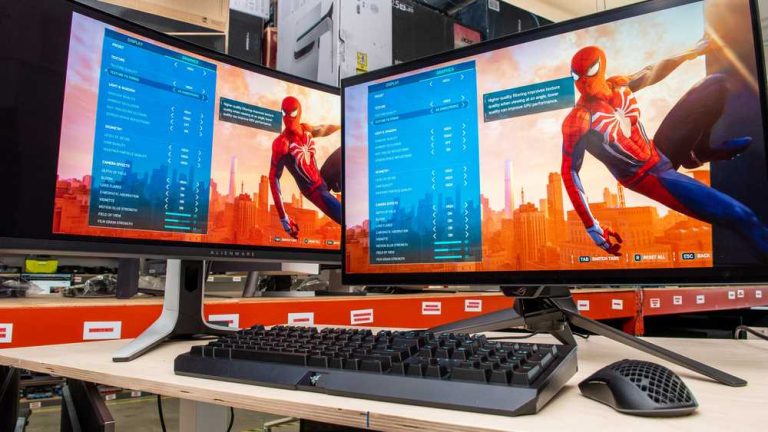To connect a 4K monitor wirelessly, you’ll need a compatible wireless display technology like Miracast or a dedicated wireless display adapter. Ensure your device supports these features, connect the adapter to your monitor, and then pair your device wirelessly. With the right hardware and a few simple steps, enjoying crisp 4K visuals without cables becomes a reality.
Connecting a 4K monitor wirelessly might sound complicated, but it’s simpler than you think. By leveraging technologies like Miracast or using wireless display adapters, you can enjoy high-resolution content without the clutter of cables. This setup is perfect for creating a sleek workspace or home entertainment system. Whether you’re using a Windows PC, a Mac, or even a smartphone, there are straightforward options to get your 4K display up and running wirelessly, offering both convenience and stunning visuals.
How to Connect a 4K Monitor Wirelessly: The Complete Guide
Understanding Wireless Connection Options for 4K Monitors
Connecting a 4K monitor wirelessly might seem complicated, but there are several options available. Each method depends on your existing devices and your setup preferences. The main options include Wi-Fi-based solutions, Miracast technology, and using specific wireless display adapters.
Wi-Fi and Network Considerations
A stable Wi-Fi network is crucial for a smooth wireless 4K display experience. A high-speed, dual-band router supports faster data transfer rates suitable for 4K content. Make sure your Wi-Fi network operates on the 5 GHz band for reduced interference and increased bandwidth.
Miracast Technology
Miracast allows devices to connect directly without a Wi-Fi network. Many Windows devices and Android smartphones support Miracast, making it an easy choice for wireless display. Your monitor or dongle must also support Miracast to work effectively.
Wireless Display Adapters
These adapters plug into your monitor’s HDMI port and act as receivers. Popular models include the Microsoft Wireless Display Adapter and Google Chromecast Ultra. They make it simple to transmit 4K video wirelessly from compatible devices.
Choosing the Right Hardware for 4K Wireless Display
Not all wireless display solutions support 4K resolution. Selecting the correct hardware ensures maximum compatibility and picture quality.
Wireless Display Dongles
Opt for dongles explicitly designed to handle 4K content. Check product specifications to confirm 4K support at 60Hz, which ensures smooth motion without lag. Some popular options include:
- Microsoft Wireless Display Adapter
- Google Chromecast Ultra or Chromecast with Google TV
- EZCast 4K Wireless Display Adapter
Compatible Devices
Ensure your source device supports the wireless technology you plan to use. Laptops, desktops, smartphones, and tablets all vary in their compatibility with Miracast, Chromecast, or other wireless standards.
Setting Up a Wireless Connection for Your 4K Monitor
Once you’ve chosen your hardware, the setup process involves a few clear steps. Proper setup ensures a high-quality 4K display experience without interruptions.
Preparing Your Devices
Update your device’s operating system and drivers. Confirm that your device supports wireless display technologies like Miracast or Chromecast. Connect your wireless adapter to your monitor and power it on.
Connecting via Miracast
On Windows devices, open the ‘Display Settings’ and select ‘Connect to a wireless display’. Choose your monitor or dongle from the list. Follow on-screen prompts to complete the connection.
Using Chromecast or Similar Devices
Open the Google Home app or compatible app. Select your Chromecast device from the list. Tap ‘Cast Screen/Audio’ to mirror your device’s display wirelessly. Adjust settings for 4K resolution and ensure proper bandwidth.
Ensuring 4K Quality and Performance
Achieving crisp 4K quality depends on several factors. Here are tips to optimize your wireless setup for the best picture and minimal lag.
Bandwidth and Network Speed
A minimum of 25 Mbps download and upload speed is recommended for 4K streaming. Use a dedicated network for your wireless display if possible to avoid bandwidth congestion.
Reducing Latency and Lag
Position your router close to your devices and avoid physical obstructions. Use dual-band routers that support 5 GHz to minimize interference. Turn off other high-bandwidth activities during streaming.
Adjusting Display Settings
Set your monitor’s resolution to 3840×2160 pixels. Confirm the refresh rate is 60Hz for smooth motion. Some devices might automatically default to lower resolutions; make sure to configure them correctly.
Tips for Troubleshooting Common Wireless Display Issues
Wireless connection problems can be frustrating but are often solvable with simple steps.
Intermittent Disconnects
Ensure your device and monitor are within a good range of the Wi-Fi router. Restart your router and devices. Check for firmware updates for your wireless adapters.
Poor Image Quality or Latency
Reduce other network traffic and prioritize your display connection. Reboot your devices and verify your network is operating at optimal speed.
Compatibility Problems
Verify that both your source device and monitor support the same wireless technology. Update drivers or software as needed.
Enhancing Wireless 4K Display Experience
Enhancement tips can help you enjoy a better wireless 4K experience with fewer issues.
Using Ethernet Connections
For best network stability, connect your router with Ethernet cables. This often results in lower latency and smoother streaming.
Minimizing Interference
Keep your Wi-Fi router away from microwave ovens and Bluetooth devices. Use a dual-band router for better frequency management.
Future-Proofing Your Setup
Invest in devices supporting Wi-Fi 6 and 802.11ax standards. These newer technologies provide faster data rates and improved reliability for 4K streams.
Additional Related Topics to Consider
Exploring related areas can help you achieve an even better wireless display setup.
Wireless Audio for 4K Monitors
Many 4K monitors support audio streaming wirelessly. Use Bluetooth or Wi-Fi-enabled speakers for high-quality sound.
Using Multiple Monitors Wirelessly
Some wireless adapters support connecting more than one monitor. Check compatibility before expanding your setup.
Security Tips for Wireless Display
Use strong passwords on your Wi-Fi network. Keep firmware updated to protect your data during screen sharing.
Cost and Budget Considerations
Wireless display solutions range from affordable to premium. Determine your needs and budget accordingly to select the best hardware.
This detailed, step-by-step approach will help you understand and implement wireless connection methods for your 4K monitor effectively. By choosing the right hardware and optimizing your network, you can enjoy crisp, high-quality visuals without the clutter of wires.
Wirelessly connect your Computer to your Smart TV #cast #wireless #tech #tips
Frequently Asked Questions
What equipment do I need to connect a 4K monitor wirelessly?
To connect a 4K monitor wirelessly, you need a compatible wireless display receiver such as a Miracast or Wi-Fi Direct device. You should also have a device capable of casting or streaming content, like a laptop, desktop, or streaming device that supports wireless display technology. Additionally, ensure your Wi-Fi network is stable and supports the bandwidth required for 4K streaming to maintain video quality without lag.
How can I troubleshoot connection issues between my device and the 4K monitor?
If your device fails to connect to your 4K monitor wirelessly, check that both devices are on the same Wi-Fi network and within appropriate proximity. Restart both devices and ensure that wireless display features are enabled. Update your device’s drivers and firmware for better compatibility. Confirm that your 4K monitor supports wireless connections and is set to the correct input or mode for wireless display. If issues persist, consider resetting network settings or relocating closer to your router.
Are there any latency concerns when connecting a 4K monitor wirelessly?
Wireless connections can introduce some latency, which might affect activities that require real-time response, such as gaming or live editing. To minimize lag, use a high-speed Wi-Fi network (preferably Wi-Fi 5 or Wi-Fi 6), ensure minimal interference from other devices, and keep your devices close to the router. Some advanced wireless display adapters may offer better performance with reduced latency, making your viewing experience smoother.
Can I connect multiple devices to the same 4K monitor wirelessly?
Connecting multiple devices to a single 4K monitor wirelessly depends on the monitor’s capabilities and the wireless display setup. Some monitors or setups support multiple input sources, allowing you to switch between devices easily. Using a wireless display receiver that supports multiple connections can let different devices connect at different times, but simultaneous use may require additional configurations or hardware. Check the specifications of your monitor and wireless display equipment for compatibility.
What is the typical range for wireless 4K monitor connections?
The effective range for wireless 4K connections generally falls within 10 to 30 feet, depending on the technology and environment. High-quality Wi-Fi networks with strong signals and minimal interference can extend this range and maintain stable connections. Walls and obstacles may reduce signal strength, so placing your router and devices optimally can enhance performance and reduce connection dropouts.
Final Thoughts
To connect a 4k monitor wirelessly, ensure your devices support Miracast, Chromecast, or similar wireless display technologies. Use a compatible receiver or streaming device, like a Chromecast Ultra or Windows Wi-Fi Direct. Establish a strong Wi-Fi connection to prevent lag or buffering.
With the right setup, connecting your 4k monitor wirelessly becomes straightforward and convenient. Follow device-specific instructions for configuration. This method offers a seamless experience, allowing you to enjoy high-quality visuals without cables.

I follow the latest trends in smart devices, portable monitors, and gaming accessories. My goal is to provide real-world insights that help readers make smarter tech decisions.






